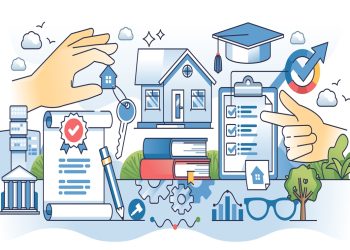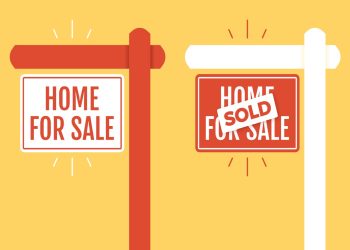RISMEDIA, February 4, 2009-(MCT)-For many consumers, the jig is up. After years of supersizing our houses, cars, meals and closets, Americans’ buying binge seems to be over.
Hung-over and remorseful consumers’ overindulgent days may be behind them. Personal consumption this year might fall to levels not seen since 1942, some economists predict. Personal savings are on the rise, too. For the first time since 1952, when the Federal Reserve Bank began tracking it, household debt is declining.
Will this newfound self-restraint lead to lasting change in behavior?
Consumer behaviorists, retail analysts and business leaders believe some budget-motivated changes will stick. Talk abounds of a “new normal” level of consumerism. When we start spending again, people will make purchases based on the environment, family and citizenship, not on hoarding. They’ll go for one really great sweater, instead of a dozen.
But economists predict that consumers will have short memories, based on how the economy has behaved through 10 previous recessions since World War II.
“I’d be very suspect of that argument that we’re going to see permanent change,” said researcher and economist Art Rolnick, the Minneapolis Federal Reserve Bank’s resident optimist. “We think the economy, within a year or so, will be back on its trend rate of growth of 2.5 or 3%. And job creation will start up again. If the stock market goes up to even 11,000, a lot of this wealth is recaptured. “When people feel more secure, they’re going to go back to their old patterns,” he said.
Of course, predicting how 218 million American adults spend money is far more than an academic exercise. Consumer spending accounts for two-thirds of the U.S. economy, and some economists say the pullback will lead to a slowdown in gross domestic product of 5 or 6% in the fourth quarter, the biggest drop in a quarter century.
Even outgoing Wal-Mart CEO H. Lee Scott envisions a “fundamental sea change in consumer buying” that won’t change when the economy rebounds. Consumers won’t have “the same immediate desire to go back to consumption and debt,” he told attendees of the National Retail Federation last month. That’ll be tough for retailers, but good for society, he said.
“I’ve been worried for a long time that someone in 2007 is selling furniture, and your first payment is 2011,” Scott said in his remarks. “Is that healthy?”
Roger McNamee, a technology investor whose 2004 book, “New Normal: Great Opportunities in a Time of Great Risk,” was published in the wake of the previous recession, says credit-happy Americans spent years avoiding signals that the party was ending.
“Now we’ve got the equivalent of a neutron bomb that took out all the partygoers,” he said. “If people don’t answer this particular wake-up call, and make the adjustment to a more balanced split between consumption and investment, what’s it going to take?”
Still, markets expand and contract all the time. And despite the seemingly gloomy forecast that retailers could close as many as 110,000 stores this year, that still would be fewer than closed in 2000 and represents just 3 to 4% of the retail industry, said economist Michael Niemira of the International Council of Shopping Centers.
“The stronger the downturn, the stronger the rebound,” Niemira said in a recent conference call. In strong downturns, “hefty pent-up demand ultimately does come out when economic conditions improve.”
In the end, prices of everyday goods are a more certain predictor of change than consumer’s pessimistic outlooks and high-minded ideals, Rolnick said.
Consumers might change their behavior after sustained high prices, but usually not before.
“If you thought the price of gasoline would stay at $4 forever, then you’d recalibrate. You’d want a more efficient car,” he said. “But if it comes back to a $1.80 or $2, you’re going to go back to your old spending habits.”
To wit, Edmunds.com reported that trucks and SUVs outsold cars in December for the first time in nearly a year, urged on by lower prices, fat dealer incentives and winter weather. Sales of hybrid vehicles, meanwhile, have dropped off. But sales overall are slow.
On the flip side, for the first time in at least a decade, Americans are asking for smaller homes, according to the National Association of Home Builders. In 1978, the average size of a new home was 1,750 square feet. As of the third quarter of last year, the average size under construction was 2,438, a drop of 7% from the previous quarter.
Pam Goodfellow, a senior analyst with consumer survey firm BIGResearch, foresees a more nuanced level of consumerism. The company’s surveys show growth in some big-ticket items, such as televisions, over the next six months.
“People are going back and rethinking what they’re spending on,” Goodfellow said. “Something like a big-screen TV is seen as an investment in your home. People are spending more time in their home and with their family, so some of our values are going to change, too.”
Trish Reid, shopping at Sam’s Club on a recent weekday, predicted that her family’s cutbacks will be durable. She’s a mother of three, the oldest in college. Although she said she has no credit card debt, her husband’s current construction job could be finished in three weeks, and Reid’s part-time job isn’t enough to carry the family.
“If the economy picks up again, most definitely our changes will carry on,” said Reid, 42, of Richfield, Minn. “Because you never know when it’s going to happen again. We were struggling already.”
Reid’s worldview gets backing from a new study by Context-Based Research Group, which claims to have “a global network of consumer anthropologists.” The report’s authors posit that the economic crisis has become a cultural crisis, and that a new, “grounded” consumer will emerge from the meltdown that will “realize the road to the American Dream isn’t paved with purchases.”
Melanie King, 37, of Cottage Grove, Minn., might fall into the group that is keenly aware that individual spending decisions have a ripple effect.
“Actually, I’m not cutting back on spending. I’m trying to do my part to put money back into the economy,” said King, heading out of Kohl’s with a shopping bag. With children 18, 14 and 10, she and her husband looked for Christmas deals but made sure it was a “normal Christmas,” thanks to their two incomes.
Retailers are hedging their bets against more abiding changes in consumer behavior. They’re paring inventories, beefing up customer service and assuming that consumers will make far fewer frivolous purchases. Business editors at Kiplinger predict that many consumers who traded down to Target and Wal-Mart won’t upshift later.
Target CEO Gregg Steinhafel said in an e-mail that he believes consumers eventually will start buying discretionary items, like clothing, jewelry and home decor, but they likely will be more thoughtful in their purchases. Target is “operating in an era in which fiscal responsibility has become a key factor in consumer behavior,” he wrote.
“We’re dealing with a changed consumer now,” Goodfellow said. “We’ve been hit with slowdowns in the past, but nothing quite like this magnitude. People are losing jobs and homes. Even if you haven’t experienced it, you know somebody who has. It’s going to affect consumers’ mind-set, maybe not 20 years down the line, but certainly for the next five to 10 years.”
But if this is the new normal, Gail Graf, 51, of Bloomington, Minn., wants no part of it. Graf and her husband have good jobs but she’s consolidating shopping trips to cut down on gas, eating out less and buying only the things she needs.
“I hope things don’t stay like this,” she said, loading up her minivan outside of a Wal-Mart. “Maybe they won’t feel as rosy as they were the last couple of years, but I certainly hope I’ll feel better than this.”
© 2009, Star Tribune (Minneapolis)
Distributed by McClatchy-Tribune Information Services.










